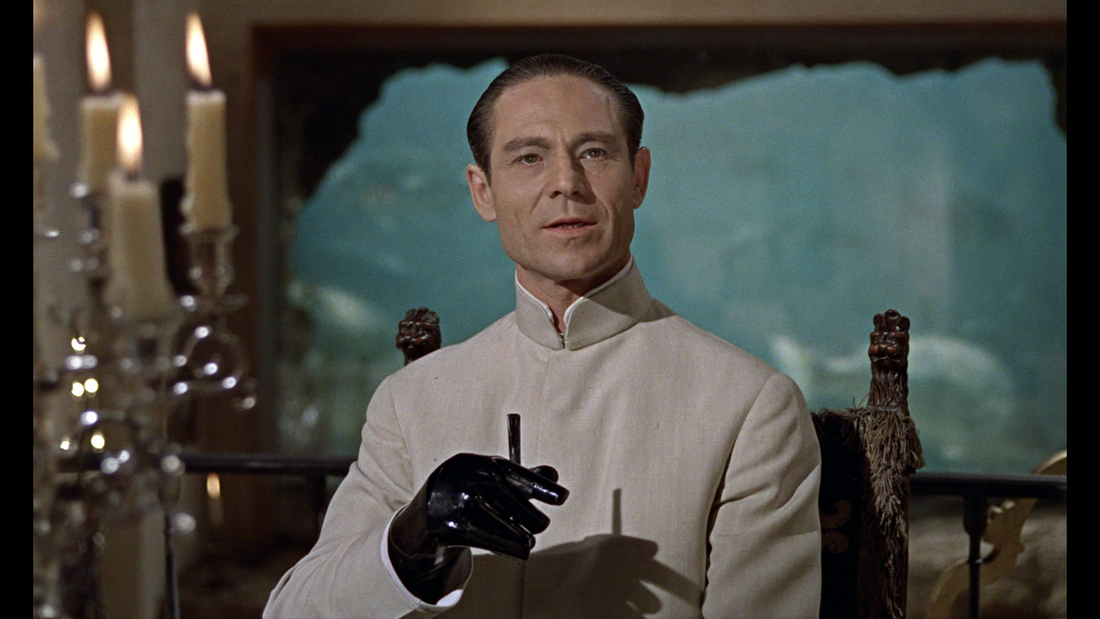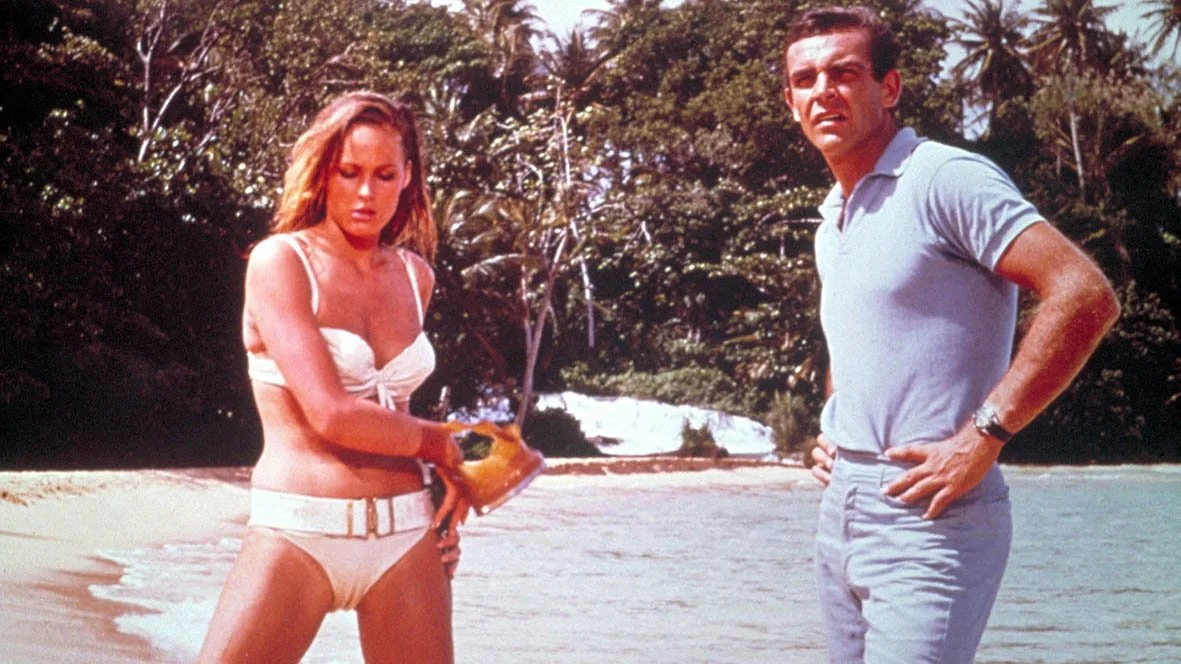Beginner’s Bond: Dr. No
Devout action fan though I am, I have a blind spot for a certain classic series about a British secret agent. I saw Goldeneye and Casino Royale in the theaters, and there’s a distant hazy memory of watching On Her Majesty’s Secret Service with my father during a rainy afternoon on family vacation. But for most of my life I have only known James Bond as fodder for countless parodies of snooty spies more interested in getting drunk and bedding their female colleagues than collecting any intelligence. And while that is not an inaccurate description of 007, in my estimation it is far from complete. So I’m going back to watch all the old movies to see if I’m right, and also to examine what has made Mr. Bond the most enduring cinematic hero of all time.
First up is 1962’s Dr. No. Back then it was fairly unusual for a movie to be named after the villain rather than the hero, so it already stood out as soon as you read the title. I always thought it impressive that James Bond had such an extensive career in screen espionage without ever including his name in the title of any of his movies. While we see plenty of villain-led films released in the early 21st century, they are usually ill-conceived origin stories that seek to “rehabilitate” evil characters by inventing paper-thin justifications for all of their heinous acts, as if they were running for public office rather than serving as the antagonist in a fictional story told for entertainment. But we don’t actually see the nefarious Dr. No until the third act. For most of the movie he is nothing but a menacing name that strikes fear into the locals. He finally shows up to exposition his evil scheme over dinner so 007 will know exactly how to stop him. Epic larger-than-life villainy that used to be confined to the pulp pages was now moving around and talking up on the silver screen—just one of the many influences Britain’s top secret agent has had on the history of cinema.
As a franchise that spans several eras of filmmaking, James Bond is a surprisingly reliable measure of the evolution of the typical action hero. Back in the 1960s, a movie’s leading man didn’t have to be the perfectly sculpted specimens demanded by Hollywood today. While Sean Connery was in great shape, he did not have a six-pack or well-defined biceps. He even sports a hairy chest with complete confidence, something that is practically forbidden in contemporary action movies. And ultimately, none of it matters because Connery is so charismatic that audiences would watch him do nothing but smoke and play cards for two hours—all the action is just a bonus. But by the time we reach the Daniel Craig era, Bond is just as shredded and hairless as Captain America. That swole-yet-chiseled physique makes no sense for a spy. Not only would he attract all kinds of attention, the workout schedule required to maintain that body alone would make it impossible for him to ever get any espionage done.
Dr. No introduces a lot of elements that would become standard for the franchise. James Bond is England’s most dashing and debonair double O agent. He is irresistible to women, and although he doesn’t bed all of the female characters, every single one sure does give it her best try. Bond travels around the world cosplaying as a bored millionaire. He makes his iconic introduction, orders a martini “shaken, not stirred,” and makes terrible puns after killing henchmen. We see the gun-barrel opening sequence and hear the classic theme song for the first time. He even flirts with Moneypenny on his way into the office.
But this film is just as notable for what is missing from the traditional secret agent formula it helped establish. The thing that surprised me most about Dr. No was how grounded it was. Until the villain starts throwing his metal hands at Bond, the film is practically realistic. Bond is sent to investigate the disappearance of some fellow agents, not track down a megalomaniacal madman bent on world domination. This prototype Bond is not invincible, losing fights and getting knocked out a few times. While Dr. No’s secret lair is intimidatingly large, it is not some sci-fi mega construct that could never be built in the real world by some determined yet equally deranged billionaire. It isn’t even guarded by a superhuman henchman that almost (but not quite) defeats the hero. The most glaring absence of all was the arsenal of crazy gadgets—one of the tropes hit by every copycat and parody of the genre is not even present in the first movie. He escapes a car chase by driving away really fast; no smoke screens or oil slicks deployed. The most advanced piece of tech issued to James Bond in this film is a silencer for his pistol. No laser watches or cleverly disguised recording devices here.
While it lacks the more fantastical elements that would come to define the genre, Dr. No is still a lot of fun. I recommend giving it a watch today. Even divorced from its historical influence, it’s still a plenty entertaining piece of popcorn cinema from the past. I thought the early films were going to be a real endurance test, but now I’m actually excited to check out From Russia With Love next.




